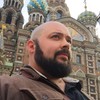Image: Virgin Galactic
The last few months have been full of stunning news in the realm of private space flight, but Virgin Galactic has been noticeably silent ever since its SpaceShipTwo crashed in October 2014, killing one of the two test pilots on board. Yesterday, though, the company rejoined the race for space with a new version of SpaceShipTwo at California's Mojave Air and Space Port.It's called the VSS Unity, and it's designed to carry six passengers and two pilots. It was named by none other than physicist Stephen Hawking, who said in a recorded message that he'd be proud to fly on the new ship."We are entering a new space age," Hawking said, "and I hope this will help to create a new unity."Even with the fanfare, though, the air of caution was unmistakable. In a press release from the day before, Virgin Galactic was careful to point out that the craft wouldn't "blast off and head straight to space" in the near future. Instead, for the coming days the craft will remain on the ground while the team makes sure all the ship's parts "work together." After that, SpaceShipTwo will undergo test flights in which it remains attached to its carrier ship WhiteKnightTwo, which acts at a launch pad of sorts high in the atmosphere.Once it's satisfied with that phase, Virgin Galactic will send the craft on glide tests, where it descends to the ground from 45,000 feet up. Only after it passes these trials will SpaceShipTwo move on to the rocket-powered tests, which in turn will eventually lead to it reaching an altitude of 50 miles. That's a significant milestone, as it marks the U.S. Air Force's official boundary for "astronaut status."Noticeably absent from all this is any kind of timetable. Indeed, the press release asserts "this isn't a race" and that the company will reach space yet through "steady testing." That caution should prove beneficial, as the National Transportation Safety Board's investigation into the 2014 crash revealed that pilot Michael Alsbury, not being prepared for the extreme g-forces affecting the craft, unlocked SpaceShipTwo's feather system — the stabilizing tail wings — when he wasn't supposed to. Despite the care given to other aspects of the craft, the design ultimately failed to account for human error.The new ship, which was 65 percent complete at the time of the 2014 crash, now has safeguards to keep a similar accident from happening. Even if someone tries to make the feather system work ahead of schedule, the ship itself won't allow it until it's safe to do so.Virgin Galactic's efforts differ in spirit from the recent successes by Elon Musk's SpaceX company and Jeff Bezos' Blue Origin firm in that it's chiefly aimed at space tourism. For the price of $250,000 a ticket, the rich will be able to take a leisurely jaunt into low space once the "steady testing" has deemed SpaceShipTwo spaceworthy. Virgin's Richard Branson claims that 800 people have already bought tickets, which is 248 more than the number of people who've ever been to space, period.By keeping things slow and steady the time around, Virgin Galactic might end up winning the race after all.
Advertisement
